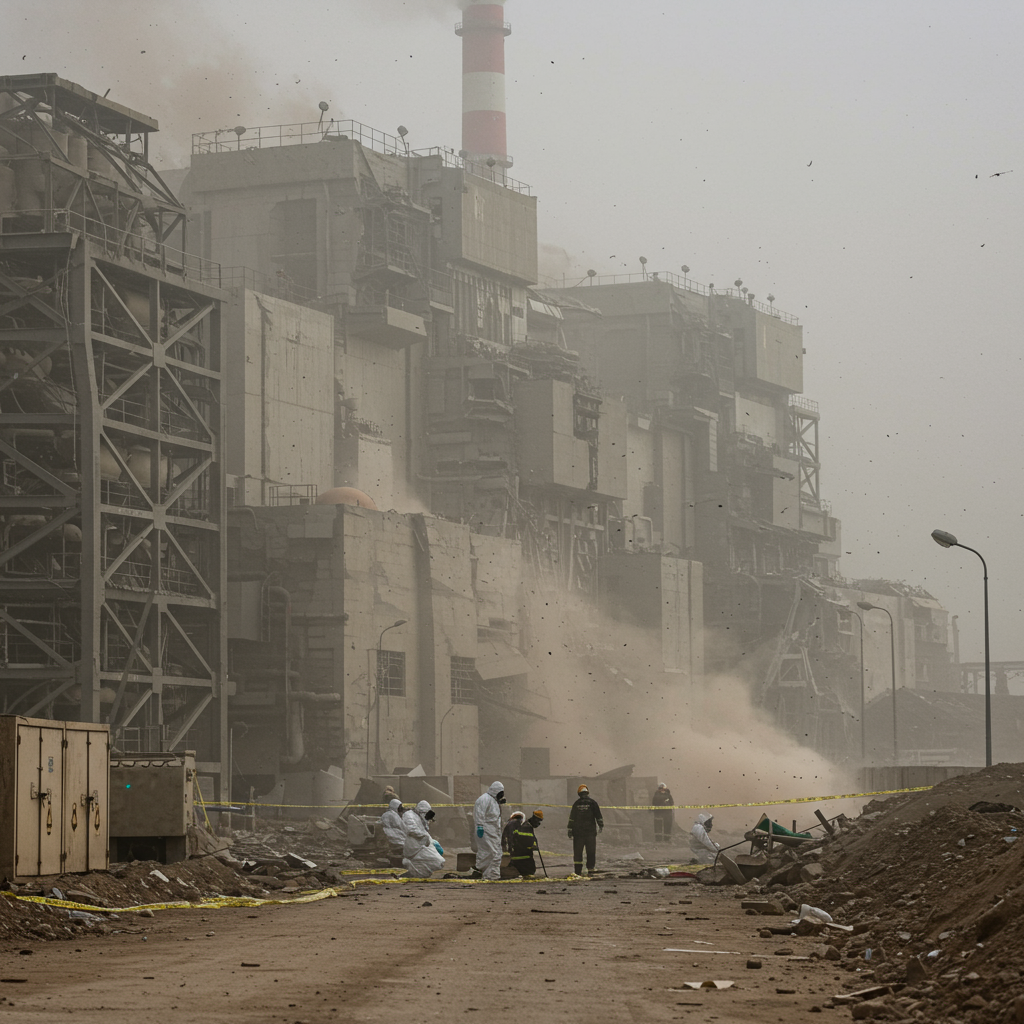A dangerous trend is jeopardizing public health across the United States. Measles, a disease once declared eliminated, is making a concerning resurgence, primarily driven by declining childhood vaccination rates and a sharp increase in non-medical exemptions, especially religious ones. These shifts are creating vulnerable communities, particularly within schools, where the protective barrier of herd immunity is weakening. Public health experts warn that this reversal of decades of progress puts countless children at risk and paves the way for outbreaks of other preventable diseases.
The Resurgence of Measles: A National Public Health Alert
The United States achieved a monumental public health victory in 2000, declaring measles eliminated thanks to widespread vaccination. This meant the disease no longer spread continuously within the country, with only sporadic cases originating from abroad. However, this hard-won status is now severely threatened. The current year, 2025, has already seen an alarming surge, with nearly 1,600 measles cases reported and three tragic deaths. This marks the highest number of cases in over 30 years and the first measles-related fatalities in a decade, signaling a dangerous backslide.
Record-Breaking Cases and Fatalities
The increase in measles cases is not an isolated phenomenon; it reflects a disturbing nationwide pattern. Outbreaks are cropping up in various states, underscoring a broad vulnerability. For instance, in West Texas and New Mexico, recent outbreaks led to over 1,000 infections, 133 hospitalizations, and three deaths among unvaccinated children. This data from the Centers for Disease Control and Prevention (CDC) paints a stark picture: the collective immunity that once shielded communities is eroding, leaving many susceptible to a highly contagious and potentially life-threatening virus.
Understanding Herd Immunity: Why 95% Matters
Herd immunity is a critical public health concept where a sufficiently high percentage of the population is immune to a disease, making its spread unlikely. For measles, experts universally agree that a 95% vaccination rate is essential to maintain this protective shield and prevent community transmission. The measles, mumps, and rubella (MMR) vaccine is remarkably effective, offering 97% protection with a full regimen. When vaccination rates dip below this 95% threshold, even by a small margin, it creates “pockets” of unprotected individuals where the virus can easily take hold and spread. Sadly, national MMR vaccination rates for kindergarteners have fallen below this crucial target, hovering around 92.5% in the 2024-25 school year. This means approximately 286,000 kindergarteners across the country are unprotected against measles, a truly alarming figure that correlates directly with the rising outbreak risk.
The Alarming Rise of Non-Medical Exemptions
A primary driver behind the decline in vaccination rates is the increasing use of non-medical exemptions. While all states mandate certain vaccinations, including the MMR vaccine, for children to attend school, all states also allow medical exemptions. Crucially, 47 states and Washington D.C. permit parents to opt their children out based on religious or personal (philosophical) beliefs. These exemptions create legal pathways for children to enter school unvaccinated, inadvertently fostering environments ripe for disease transmission.
Religious Exemptions: A Legal Pathway for Unvaccinated Students
South Carolina offers a clear example of this dynamic. In this state, parents can obtain medical or religious exemptions. While medical exemptions require a doctor’s confirmation of a health condition preventing vaccination, religious exemptions allow parents to decline mandated vaccines based on their sincerely held religious beliefs. Other states, like Idaho, go a step further by also offering philosophical exemptions, which are based on personal moral or ethical convictions rather than religious ones. The existence and increasing utilization of these non-medical exemptions are directly contributing to the breakdown of herd immunity in many communities.
Data Reveals a Troubling Trend
The numbers unequivocally demonstrate the growing impact of exemptions. Nationally, the overall exemption rate for kindergartners reached an unprecedented 3.6% in the 2024-25 school year, representing about 138,000 children. The surge is overwhelmingly driven by non-medical exemptions, which climbed to a record high of 3.4% during the same period, a stark increase from 1.4% in 2010-11. In contrast, medical exemptions have remained relatively stable at around 0.2%.
State-level data further underscores this trend. In South Carolina, for instance, the upstate region recorded a 5.3% religious exemption rate, significantly higher than the statewide average of 3.3%. Some schools show even more dramatic figures: at Global Academy of South Carolina, a K-5th grade charter school, a staggering 82% of its 605 students in the 2024-25 school year had religious exemptions, while only 17% had completed their required immunizations. Similarly, Fairforest Elementary, a public school, reported 13% of its 764 students held religious exemptions.
This pattern isn’t limited to the South. Idaho, which permits both personal and religious exemptions, recorded an alarming 15% non-medical exemption rate, correlating with one of the nation’s lowest MMR vaccination coverages at just 78.5%. Conversely, states like Connecticut, which ceased allowing religious exemptions in 2021, demonstrate a remarkably low non-medical exemption rate of 0.1% and high vaccination coverage. This contrast strongly suggests that the availability of non-medical exemptions directly impacts vaccination rates and community protection. Dr. Linda Bell, South Carolina’s state epidemiologist, observed that the current outbreak in her state isn’t linked to a specific religious community, as some past outbreaks have been. Instead, parents “from a variety of different individuals” are making the choice not to vaccinate, indicating a broader societal shift in vaccine acceptance.
Driving Factors Behind Declining Vaccination Rates
The decline in vaccination rates and the rise in exemptions are complex issues, fueled by a confluence of factors that have gained traction in recent years. This includes an increase in vaccine hesitancy, the spread of misinformation, and a general erosion of trust in public health authorities.
Vaccine Hesitancy and Misinformation
The COVID-19 pandemic significantly altered public discourse around vaccines, leading to increased skepticism and a decline in trust in health institutions. Misinformation, particularly concerning vaccine safety and effectiveness, has proliferated, often overriding evidence-based medical advice. Persistent, scientifically debunked claims, such as a link between the MMR vaccine and autism, continue to sow doubt among some parents. These narratives, coupled with increasingly partisan views on vaccine requirements, contribute to parents opting out of school-mandated immunizations for non-medical reasons.
Adding to the confusion are recent developments at the federal level. Efforts led by Department of Health and Human Services (HHS) Secretary Robert F. Kennedy Jr. to re-examine the federal childhood vaccine schedule and potentially replace members of the CDC’s vaccine advisory committee (ACIP) have created widespread public uncertainty. KFF polling from August 2025 revealed that nearly half of parents are unsure about federal health agencies’ recommendations for childhood vaccines, further complicating vaccination decisions. Reduced federal support for state and local health departments also risks further depressing childhood vaccination rates.
Policy Shifts and the Future of Mandates
While most Americans across the political spectrum support school-required measles and polio vaccines, legislative trends in some states are moving in the opposite direction. Florida, for example, has become the first U.S. state to announce plans to phase out all childhood vaccine mandates, a move widely criticized by public health experts for its potential to trigger deadly disease outbreaks. Other states like Idaho, Montana, and Iowa have debated or enacted legislation that limits vaccine requirements or makes it easier to obtain exemptions. These policy shifts, often framed under the banner of “medical freedom,” directly undermine the public health tools historically used to maintain high vaccination coverage and protect communities.
Real-World Impact: Schools on the Front Lines
When vaccination rates fall below the critical herd immunity threshold, schools become particularly vulnerable. They are densely populated environments where highly contagious diseases like measles can spread rapidly among unvaccinated individuals, impacting not only the health of students and staff but also disrupting education.
South Carolina’s Outbreak: A Case Study
South Carolina’s Spartanburg County is a vivid illustration of this unfolding crisis. Public health officials identified a dozen measles cases by mid-October 2025, with more expected in the fast-growing upstate region. New cases even emerged among unvaccinated students who had been previously quarantining, highlighting the tenacity of the virus. Melissa Nolan, director of the Institute for Infectious Disease Translational Research at the University of South Carolina, noted that this outbreak is concentrated in one of the state’s more conservative areas, which has experienced a decline in vaccine uptake. Two Spartanburg County schools alone have had nearly 140 unvaccinated students in quarantine. At one specific school, less than a fifth of students had their required immunizations, far below the 95% needed to prevent outbreaks, making it a hotspot for transmission.
A Look at Other States: Pennsylvania’s Experience
Similar troubling trends are evident in other states. In Pennsylvania, an “Action News Investigation” revealed that the number of schools falling below the 95% herd immunity threshold has nearly doubled over the last five years, now encompassing approximately a quarter of all schools statewide. Dr. Lori Handy, associate director of the Vaccine Education Center at Children’s Hospital of Philadelphia (CHOP), emphasized that widespread resurgence of measles is a genuine risk. The investigation highlighted drastic declines in MMR rates, with some schools seeing drops from 99% to as low as 46% for certain grade levels.
The severity of such outbreaks is not just theoretical. A major measles outbreak in Philadelphia in the 1990s offers a chilling historical precedent. Within six months, 486 cases were reported, and nine unvaccinated children died, primarily linked to a church that rejected vaccines and medical care. This historical context serves as a powerful reminder of measles’ devastating potential when vaccination rates are low.
Beyond Measles: Risks for Other Vaccine-Preventable Diseases
The declining vaccination rates extend beyond just the MMR vaccine, posing a broader threat to public health. The CDC reports that coverage for other critical childhood vaccines, including diphtheria, tetanus, and pertussis (DTaP), and polio, has also decreased. National DTaP coverage among kindergartners dropped to 92.1% in 2024-25, down from 92.3% the previous year, suggesting a potential rise in whooping cough cases. Polio vaccination coverage similarly decreased to 92.5%.
Before widespread vaccination, diseases like polio devastated communities, causing nearly 60,000 cases annually in the U.S. Even with its elimination declared, polio has recently re-emerged in some areas, highlighting that the forgotten successes of vaccination are not guaranteed for future generations. State epidemiologist Dr. Bell warns that the increasing vaccine hesitancy in upstate South Carolina “puts us at risk, not just for measles. We continue to see outbreaks of other vaccine-preventable diseases in that area of the state as well.”
Strengthening Public Health: Rebuilding Trust and Immunity
Reversing these dangerous trends requires a concerted and multi-faceted effort. Dr. William Moss, Executive Director of the International Vaccine Access Center (IVAC) at Johns Hopkins, stresses the necessity of strengthening public trust in the safety and effectiveness of vaccines. For too long, the effectiveness of vaccines has allowed many Americans to forget the frightening reality of these preventable diseases. When parents understand the severe and potentially devastating outcomes of measles, which can include lung infections, brain infections, and even death, they are more likely to choose vaccination.
Actionable Steps for Communities and Parents
To rebuild community immunity and protect children, several actions are crucial:
Prioritize Accurate Information: Parents should seek vaccine information from trusted healthcare providers and reputable public health organizations, not unverified sources or social media.
Understand State Policies: Familiarize oneself with specific state and school district vaccination requirements and exemption policies.
Advocate for Stronger Public Health: Support initiatives that promote vaccine education and make accurate health information accessible to all.
Reinforce Herd Immunity: Recognize that vaccination is a collective effort that protects not only one’s own child but also vulnerable members of the community who cannot be vaccinated due to age or medical conditions.
Frequently Asked Questions
What are the main factors contributing to the decline in childhood vaccination rates across the U.S.?
The decline in childhood vaccination rates is primarily driven by an unprecedented rise in non-medical exemptions, often based on religious or philosophical beliefs, which now stand at a record high of 3.4% nationally for kindergartners. This trend is exacerbated by increasing vaccine hesitancy, fueled by misinformation, growing skepticism about vaccine safety and effectiveness, and a general decline in trust in health authorities. Policy shifts in some states, like Florida’s plan to phase out all mandates, further contribute to this weakening of public health protections.
How do religious and philosophical exemptions impact school vaccination rates in different states?
Religious and philosophical exemptions significantly impact school vaccination rates by creating legal avenues for children to attend school unvaccinated, even though vaccines are generally required. States like South Carolina allow religious exemptions, leading to some schools having over 80% of students opting out. Other states, such as Idaho, permit both religious and philosophical exemptions, resulting in some of the lowest MMR vaccination rates (e.g., 78.5%). Conversely, states that have ceased allowing religious exemptions, like Connecticut, demonstrate remarkably low exemption rates (0.1%) and high vaccination coverage, highlighting a clear correlation between exemption policies and community immunity levels.
What steps can communities and parents take to address rising vaccine hesitancy and protect against outbreaks?
To address rising vaccine hesitancy and protect against outbreaks, communities and parents should prioritize seeking accurate vaccine information from trusted medical professionals and reputable public health organizations. It’s crucial to understand the scientific consensus on vaccine safety and effectiveness, debunking misinformation. Communities can support public health campaigns that educate about the severe risks of vaccine-preventable diseases like measles, emphasizing the importance of herd immunity. Parents should ensure their children are up-to-date on all recommended immunizations to contribute to collective protection and safeguard vulnerable individuals.
Conclusion: A Call for Collective Action
The re-emergence of measles and the decline in childhood vaccination rates represent a profound threat to public health in the United States. Once considered a disease of the past, measles is now a stark reminder of the devastating consequences when collective immunity falters. The increasing reliance on non-medical exemptions, coupled with a landscape of vaccine hesitancy and misinformation, is actively dismantling the protective barriers built over decades. Reversing this dangerous trend demands a renewed commitment to evidence-based health practices, a strengthening of public trust in science, and a collective understanding that vaccination is not just a personal choice, but a vital communal responsibility. Only through united action can we ensure the health and safety of all children and prevent further outbreaks of preventable diseases.



